Employee onboarding is a big deal. It is a separation from the familiar and an initiation into a new world. Yet most companies manage onboarding as the equivalent of chucking novice swimmers into the deep end. Sure, a few people turn out to be Olympic athletes, but most only manage to tread water…at best.
Onboarding is high stakes. Knowledge workers need an average of 6 months to reach full productivity. During those months, 90% of them also make up their minds about whether they want to stay at your company or try their luck elsewhere, costing you roughly twice their salary to replace them with new people (who will probably also leave soon).
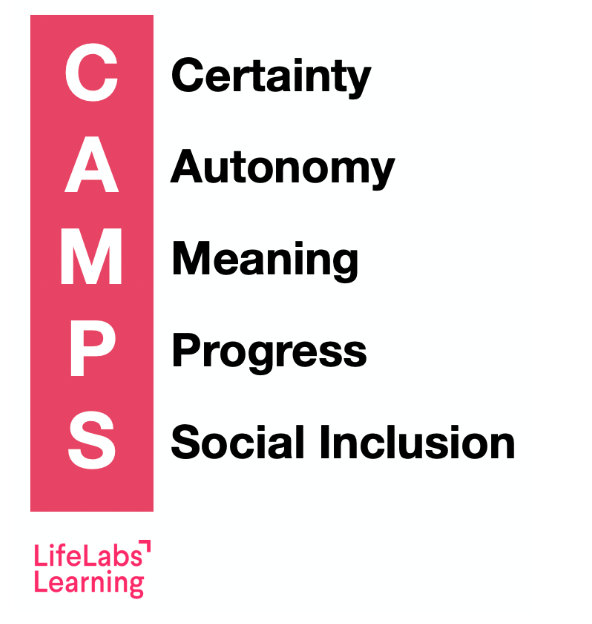
An effective onboarding process can increase employee productivity by 54%, boost engagement and increase retention. A great onboarding process can even broaden your pool of available talent, letting you hire for potential rather than skills and knowledge.
So how can you transform your onboarding process from a risk into a core strategy for performance and retention? Whether you’re building or rebuilding your onboarding system, a helpful tool to simplify your work is the LifeLabs CAMPS Model.
CAMPS stands for Certainty, Autonomy, Meaning, Progress, and Social Inclusion, and it neatly sums up our deepest drivers of engagement. Consider each driver one by one to determine whether your onboarding process falls in the good or bad CAMP.
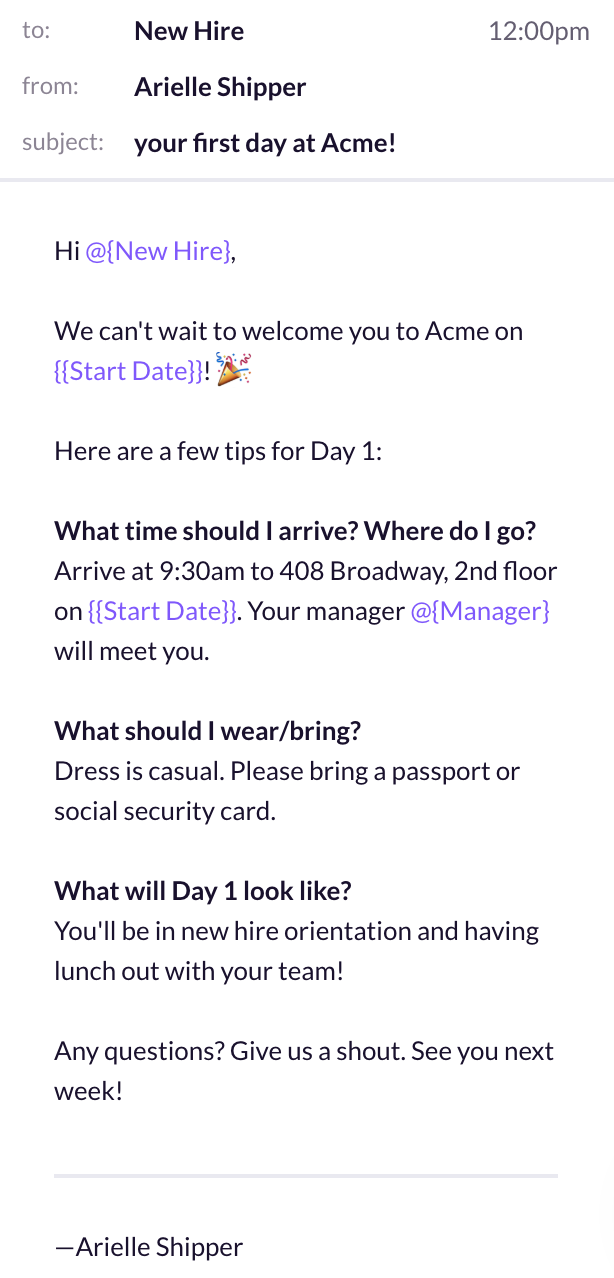
Certainty
Most of us humans don’t do well with uncertainty, especially when the stakes are high. Uncertainty triggers our sympathetic nervous system and releases the stress hormone cortisol, inviting a fight or flight state rather than the curiosity and connection vibe you’re probably going for. So, help your new hires relax by eliminating unnecessary mysteries.
Here are some uncertain areas to tackle before day one:
- Team member names, roles, bios, photos (who are my coworkers?)
- Employee directory – including who to ask for on day one (who do I come to for what?)
- Job/role description (how is success defined for my role?)
- Benefit enrollment and pay schedule (have I forgotten anything critical to my safety?)
- Schedule of first day, week, or even month (what will happen?)
- What to bring with you – like ID, forms, notebook, lunch (will I feel prepared?)
- Attire expectations (will I look like a weirdo?)
Setting expectations and eliminating mysteries is as easy as sending an email or two before the new hire’s start date, which also keeps new hires engaged and gets them excited to dive into their new roles. To increase comprehension, split critical information into similarly themed groups. For example, a job description is best sent close to the offer, while attire expectations and a Day 1 schedule are best sent a day or two beforehand.
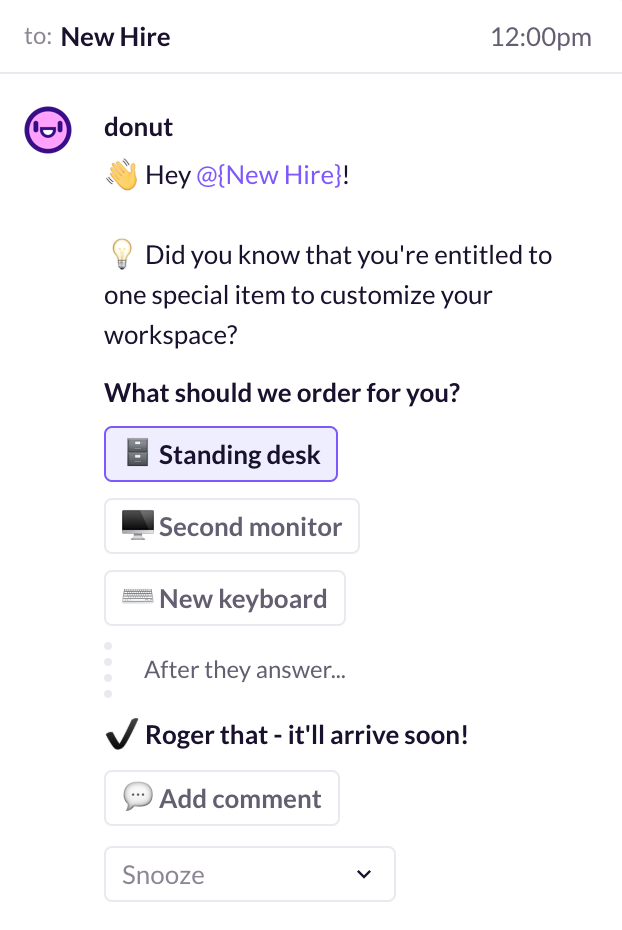
Autonomy
It’s so easy for new hires and companies to focus on helping people fit in during onboarding that we forget the power of standing out. Research shows we are most likely to stay in a role if we feel like ourselves (vs just one of the group) early on in the employee experience. This is a concept called Optimal Distinctiveness: just the right balance of feeling unique and similar to others.
You can give people a boost of autonomy in a few ways:
- Encourage sharing something personal early on with the team or company
- Provide resources to customize their workspace
- Give out swag with the employee’s name along with the company logo
- Help new hires set personal development goals
- Offer (easy) options early on (e.g., do you want a red notebook or a green one?)
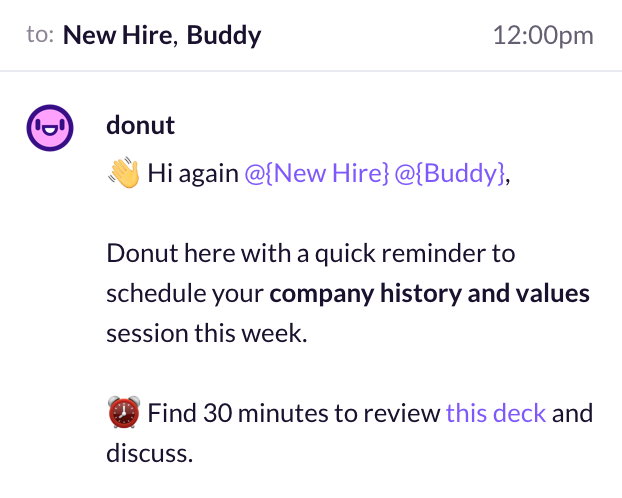
Meaning
Purpose is one of our most important human needs. Research shows that connecting employees’ work to concepts that matter to them increases engagement, satisfaction, and productivity. To paraphrase Nietzsche, “He who has a why, can bear almost any how.” Ensure new hires have the “why” (i.e. our raison d’etre) even before they have the “how” (i.e. employee manual). New hires need to have a clear sense of how they are engaged in work worth doing, and how their tasks impact customers, coworkers, and your company mission.
Here are ways to weave meaning into people’s onboarding experience:
- Find opportunities to share stories of the company’s past.
- Communicate your future strategy and how employees can co-author an unfolding story.
- Have employees talk with end-users (including customers and impacted coworkers).
- Share a collection of client testimonials.
- Create space for people to share how the company mission and values resonate personally.
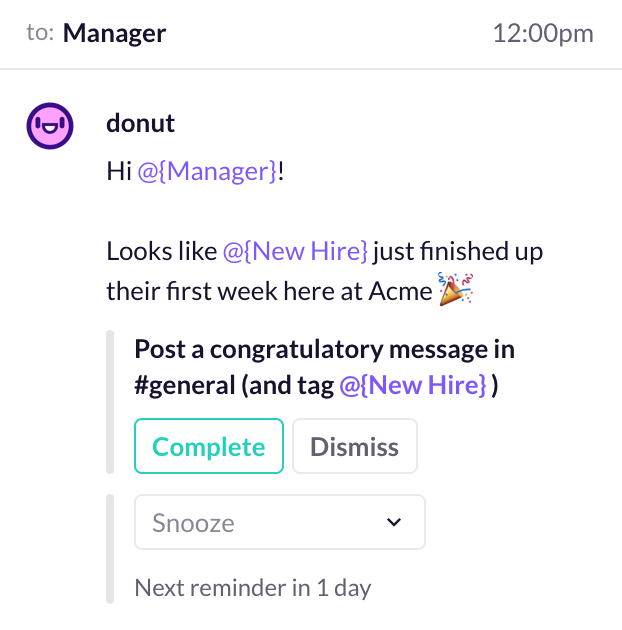
Progress
One of the greatest predictors of workplace happiness is a feeling of progress. Research shows that, contrary to expectations, it’s not the big wins that matter most, but rather a feeling of continuous and steady achievement that predicts well-being. Milestoning progress allows employees to not only track their own progression, but also to generate momentum moving forward. Neurologically, when people anticipate and hit their goals, they experience a burst of dopamine (the neurotransmitter of reward and addiction). Onboarding new hires presents a great opportunity to become dopamine dealers!
Here are ideas to spread the dopamine around:
- Communicate clear and measurable expectations around goals.
- Show people learning and development opportunities available to them (e.g., mentoring, workshops).
- Collectively celebrate small wins (1-1 meetings, team meetings, Slack, etc).
- Assign people to share out new hire milestones (e.g. “Jen just completed her first client call!”).
- Give out a new hire journal/app to track questions, accomplishments, and lessons learned.
- Provide an opportunity to make early contribution to the team.
- Share checklist of what new hires need to accomplish each week for the first 4 weeks.
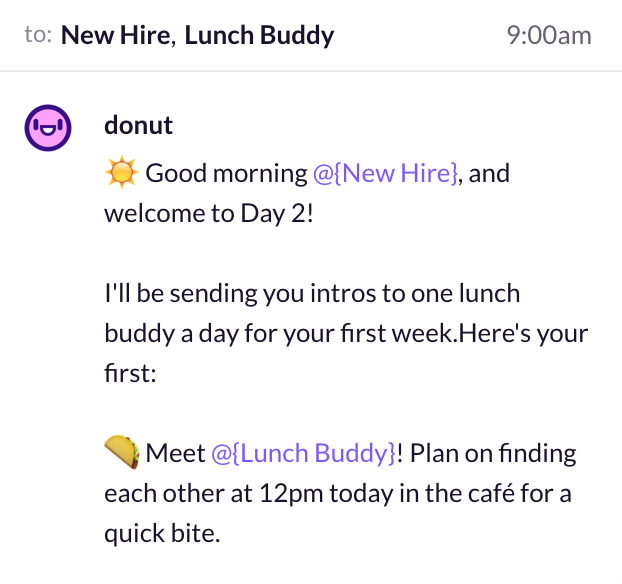
Social Inclusion
Our brains are obsessed with fitting in – especially in a new environment. There is good reason why the first day of school (from the bus ride, to the classroom and cafeteria) is classic film fodder. The need to belong is so deeply ingrained within us that whenever we feel excluded our brains register it as if we are experiencing physical pain.
It’s no surprise then that satisfying the need to belong yields the greatest onboarding return with respect to commitment, time-to-performance, and retention. Inclusion is not only about people feeling connected but also about creating access to information, resources, and opportunities. Research shows that employees who report having a “best friend” at work are significantly more likely to be engaged, efficient, innovative, helpful, playful, and have fewer workplace accidents.
Here are some ideas to build connection:
- Create (virtual) handshakes before day one (i.e. meet online before meeting in person).
- Share new hire personal info with team (e.g. favorite team, music, show).
- Carve out time for people to get to know new hires.
- Invite people to volunteer to be new hire buddies.
- Ask new hires for their perspectives on relevant issues.
- Encourage teammates to introduce new hires to people outside their team (e.g. “Oh, you like G.O.T., you should talk with …”)
- When possible, hire in cohorts (going through a shared-experience solidifies connections).
WHAT NEXT?
Put your onboarding system to the CAMPS Test. Rate each engagement driver from 0% to 100% one week before start date, one week into the job, 30 days, 60 days, and 90 days in. Spot your biggest opportunity for improvement and do something about it!
Want to learn more about manager, exec, and team training LifeLabs Learning offers? Get in touch with the LifeLabs Learning team.